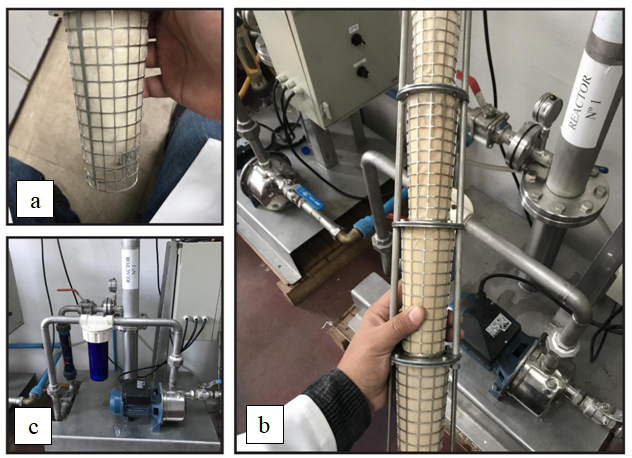 |
|
Methylthionine Chloride (MTC), commonly known as methylene blue, is a substance widely used in medical and clinical industry as indicator, various diseases treatment and diagnostic. When MTC is discarded out of the organism, it becomes a residue which ends in wastewater treatment plants and it is not treated or removed properly because it has a synthetic origin, providing it with stability and chemical structure difficult to break. In the present work, MTC was treated through advanced oxidation processes (AOPs) photolysis and heterogeneous photocatalysis, in three pH magnitudes (3.5, 7.2 and 9.5), and comparing when 1 mMol of H2O2/L of sample was added or not at the beginning of the experiment. MTC degradation reached 62.9 and 54.14%, for photolysis and photocatalysis respectively, both in acid pH conditions and adding H2O2 to the sample. Kinetic constants (K) were calculated, showing acid pH as more effective; likewise, half life time decreases under these conditions. With Student-t statistic test, K from both processes were compared, resulting acidic and basic pH significantly different, but not neutral.
Keywords: TiO2/SiO2 photocatalyst, recalcitrant compounds degradation, conduction band, electron/hole generation, methylene blue.
|
|
 |

